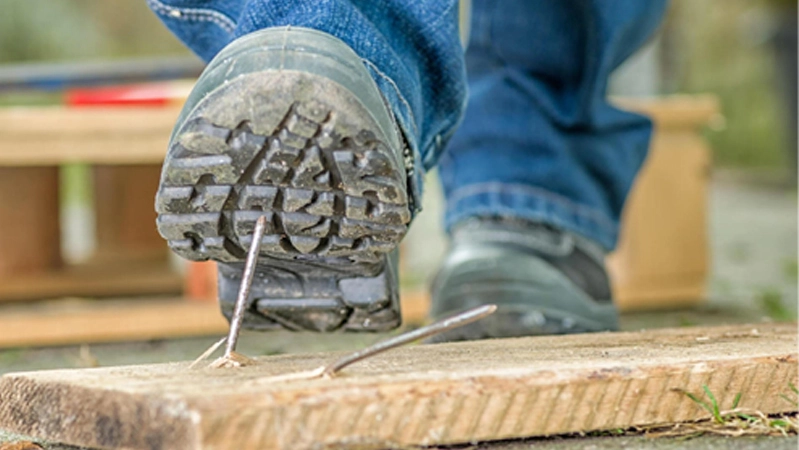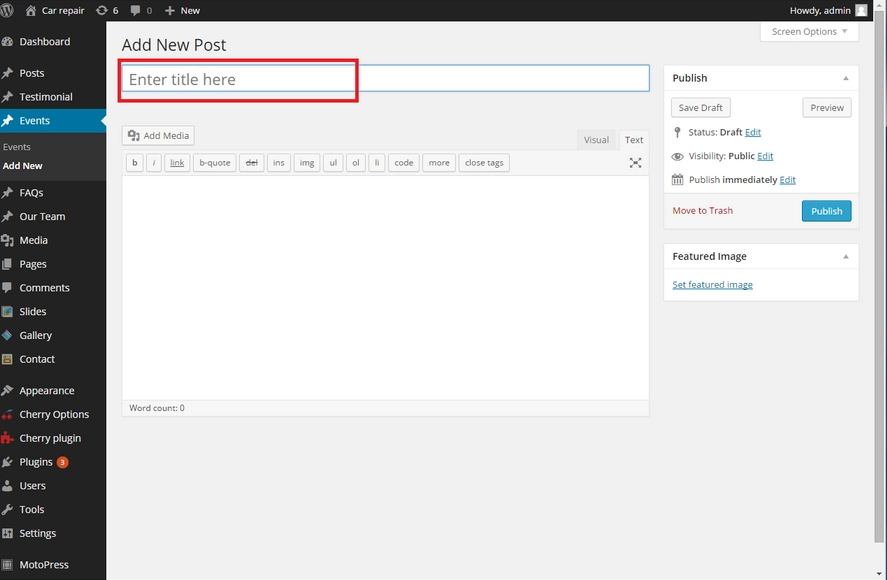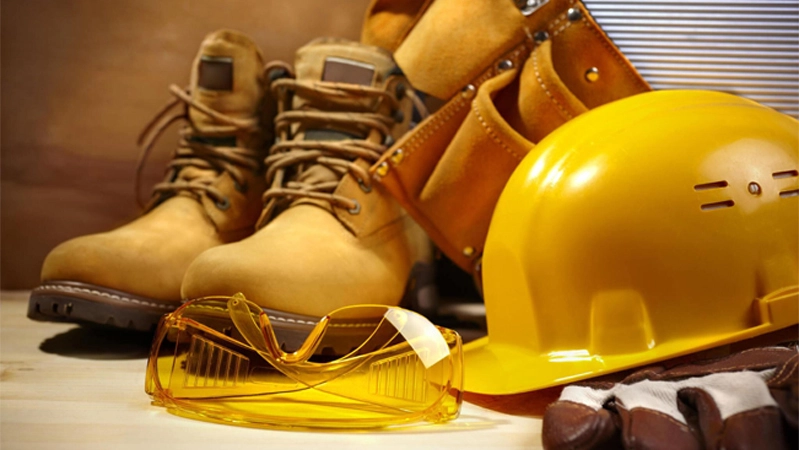Table of Contents
In the world of construction, ensuring the safety of your feet is paramount. From navigating potential hazards to enduring long hours on the job, the right pair of construction work shoes can make all the difference. Let’s explore key considerations to help you make an informed decision.
Steel vs. Composite Toe: Which Construction Work Shoes is Right for You?
When it comes to choosing the right toe protection, the debate between steel and composite toes often takes center stage. Construction work shoes with steel toes provide unparalleled strength and durability. They are ideal for heavy-duty environments where impact and compression risks are high. On the other hand, composite toe options are crafted from non-metal materials, offering a lighter alternative without compromising safety. Consider the nature of your work and weight preferences to determine which toe type suits your needs best.
In high-risk scenarios, such as construction sites, understanding the nuances between steel and composite toe constructions ensures that your feet are safeguarded without compromising comfort.
Beyond the Toes: What Other Safety Features Should You Consider?
Shoe construction goes beyond toe protection, and considering additional safety features is crucial. Look for footwear with metatarsal guards, puncture-resistant soles, and ankle support. These features enhance overall foot safety, providing comprehensive protection in dynamic work environments. Investing in best construction shoes equipped with these extra safety elements ensures that your feet remain shielded from a variety of potential risks.
Navigating a construction site requires a holistic approach to safety, and selecting footwear with multiple protective features ensures that you are well-prepared for any challenge that may arise.
Comfort on the Jobsite: Can Construction Work Shoes Be Comfortable?
Contrary to popular belief, comfort is not sacrificed for safety when it comes to construction work shoes. Advances in technology and design have led to the creation of comfortable yet highly protective footwear. Look for shoes with cushioned insoles, moisture-wicking lining, and ergonomic designs that provide the necessary support for long hours on the job. Striking a balance between safety and comfort is essential, ensuring that your feet remain both secure and at ease throughout your workday.

Comfortable construction work shoes contribute to increased productivity and reduced fatigue, making them a valuable investment for anyone working in the construction industry.
Keeping Your Feet Dry: Waterproofing Options Explained
Construction sites often expose workers to unpredictable weather conditions. Choosing best construction work shoes with effective waterproofing is crucial to keep your feet dry and comfortable. Opt for footwear made with waterproof materials such as Gore-Tex or treated leather to ensure maximum protection against rain and other moisture-related challenges. Dry feet not only enhance comfort but also reduce the risk of fungal infections and other foot-related issues.
Investing in waterproof construction work shoes is a proactive step towards maintaining optimal foot health and performance, especially when working in diverse weather conditions.
Finding the Right Fit: How to Ensure Your Shoes Stay On
The right fit is paramount when it comes to construction work shoes. Ill-fitting footwear can lead to discomfort, blisters, and even accidents. Prioritize shoes that provide ample arch support, a secure heel fit, and adjustable closures. Ensure that your toes have enough room to move without being overly spacious. Trying on different styles and sizes helps you identify the perfect fit for your feet, ensuring that your shoes stay on securely throughout your workday.
Investing time in finding the right fit for your construction work shoes is an investment in both your comfort and safety, contributing to a more secure and productive work experience.
Electrical Hazards: Do You Need Special Work Shoes?
Working around electrical hazards requires specialized footwear designed to provide insulation and protection. Construction work shoes with electrical hazard (EH) ratings offer an additional layer of safety, preventing electrical currents from reaching the ground and potentially harming the wearer. Ensure that your chosen footwear complies with industry safety standards and regulations to guarantee maximum protection against electrical hazards.
When dealing with electrical risks, opting for best construction shoes specifically designed for such environments is a non-negotiable aspect of prioritizing your safety on the job.
Slips, Trips, and Falls: Choosing Soles for Traction
Slippery surfaces are a common challenge in construction sites. To mitigate the risk of slips, trips, and falls, focus on the traction capabilities of your construction work shoes. Look for slip-resistant soles made from rubber or other high-friction materials. Deep treads and patterns enhance grip, providing stability on various surfaces. Prioritizing shoes with excellent traction is a proactive measure to reduce the likelihood of accidents caused by slippery conditions.
In environments where the risk of slips, trips, and falls is prevalent, selecting best construction work shoes with reliable traction is a fundamental aspect of ensuring workplace safety.
All-Day Wear: Materials for Durability and Breathability
Construction workers often spend extended hours on their feet, necessitating footwear with a perfect balance of durability and breathability. Construction work shoes crafted from high-quality materials like leather or synthetic fabrics offer durability, ensuring longevity in challenging work conditions. Additionally, look for shoes with breathable features such as mesh panels or moisture-wicking linings to keep your feet cool and comfortable throughout the day.
Prioritizing both durability and breathability in your best construction shoes selection guarantees that your footwear can withstand the rigors of your job while keeping your feet fresh and comfortable.
Puncture Protection: When It Matters Most
Construction sites may expose workers to potential puncture hazards, such as nails or sharp objects. Construction work shoes with puncture-resistant soles provide an added layer of protection against these risks. Ensure that your chosen footwear complies with safety standards for puncture resistance, offering peace of mind in environments where such hazards are prevalent.
Prioritizing best construction work shoes with puncture protection is a proactive measure to minimize the risk of injuries and maintain a secure working environment.
From Summer Heat to Winter Chill: Work Shoes for All Seasons
Adaptable footwear is essential for construction workers facing diverse weather conditions. Construction work shoes designed for all seasons should offer insulation for colder temperatures and breathability for warmer days. Look for shoes with features like insulation lining for winter warmth and moisture-wicking properties for summer comfort. Investing in versatile footwear ensures year-round protection and comfort, allowing you to focus on the job at hand regardless of the weather.
Choosing best construction shoes that cater to all seasons is a strategic approach to maintaining optimal performance and safety throughout the year.
Conclusion
In conclusion, selecting the right pair of construction work shoes involves a comprehensive evaluation of various factors, including toe protection, safety features, comfort, waterproofing, fit, electrical hazard resistance, traction, durability, puncture protection, and seasonal adaptability. Prioritize your safety and well-being by choosing the best construction shoes tailored to your specific work environment and needs. Visit Jointhegrave.com for a curated selection of high-quality construction work shoes that prioritize both safety and comfort, ensuring that your feet are well-protected on the job.














Leave a Reply